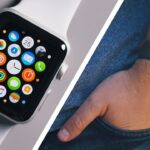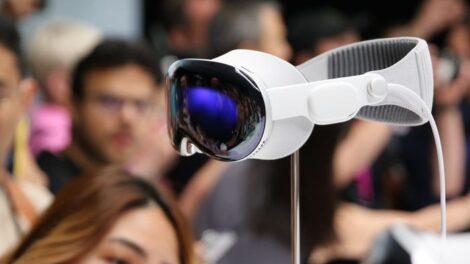Samsung is reportedly developing a groundbreaking new satellite connectivity feature for its upcoming flagship Galaxy S24 smartphone series, according to recent insider reports. This connectivity would allow Galaxy S24 devices to connect to satellites to enable emergency calling and messaging even in the most remote regions outside of cellular range.
This potential feature underscores Samsung’s commitment to equipping its premium smartphones with innovative communications capabilities to keep users connected and safe. Let’s take an in-depth look at everything we know so far about Samsung Galaxy S24 satellite connectivity and what it means for the future of smartphones.
Satellite Connectivity Set to Enable Global Emergency Access
For several years, leading experts have highlighted the need for satellite-enabled smartphones to provide connectivity dead zones lacking 4G or 5G infrastructure. Samsung appears ready to make the concept a reality with its Galaxy S24.
Sources state that Samsung is collaborating with Iridium, a company operating a network of 66 cross-linked low Earth orbit (LEO) satellites to enable truly global connectivity. With an expansive constellation of satellites encircling the entire planet, Iridium can deliver coverage anywhere on Earth – including remote wilderness areas lacking cellular infrastructure.
By integrating Iridium’s satellite network connectivity into the Galaxy S24, users would gain the ability to connect to emergency services by phone or text even in the most isolated locations. This provides an invaluable lifeline for hikers, adventurers, and anyone far off the grid where cell towers cannot reach.
While exact details remain unconfirmed, the Galaxy S24 lineup may include a dedicated satellite-enabled app or built-in features to easily facilitate emergency calls/messages via satellite link. This would provide simple access without requiring technical satellite expertise.
Who Stands to Benefit Most from Satellite Connectivity?
Expanding emergency satellite access in the Galaxy S24 aims to benefit several key user groups who routinely venture beyond cellular coverage:
- Outdoor adventurers – Hikers, climbers, and campers in national parks and backcountry often risk losing connectivity due to remoteness. Satellite access enables calling for help.
- Scientific researchers – Scientists undertaking field research in isolated regions like the Arctic can maintain critical check-ins.
- Foreign aid workers – Aid providers in disconnected rural communities abroad can coordinate life-saving operations.
- First responders – Firefighters responding to wildfires in remote forests benefit from expanded communications range.
- Military personnel – Troops deployed in the field can access satellite links to improve coordination and safety.
- Maritime vessels – Ships out at sea well beyond the range of ground networks require satellite connections.
By empowering these users who depend on connectivity in extreme environments, the Galaxy S24’s potential satellite features could save lives and improve safety for both professional and recreational applications.
Delivering Consistent Global Coverage Via LEO Satellite Networks
Past generations of satellites operated in high geostationary orbits over 22,000 miles above Earth. This introduced high latency and unreliable coverage for satellite phones. Modern networks like Iridium leverage lower LEO orbits ranging from 200 to 1,000 miles high.
The closer orbital proximity combines with interconnected mesh networks to deliver consistent, low-latency satellite connectivity anywhere on the planet. LEO networks eliminate previous reliability issues and expand the viability of applications like emergency smartphone access.
Iridium’s satellites operate at an altitude of approximately 485 miles. Devices on the ground connect to the nearest satellite overhead, which routes signals through space via inter-satellite links to terrestrial stations linked to landlines and cellular infrastructure. This creates a global web of seamless coverage.
By tapping Iridium’s LEO network, the Galaxy S24 gains an impressive global footprint for emergency connectivity, keeping users safe regardless of how remote their location. The expansion to consumer smartphones represents a huge opportunity to further grow the LEO satellite industry.
Potential for Broader Satellite Connectivity Functions
While emergency scenarios represent the most critical application, satellite links on the Galaxy S24 could also potentially enable other functions that enhance quality of life:
- Text messaging – Basic text communications offer lightweight satellite connections for general check-ins and coordination.
- Location sharing – Link location pinpoints via satellite when beyond cellular networks.
- SOS beacon – Trigger an SOS beacon visible to emergency responders if in a life-threatening situation.
- Tracking – Satellite pings enable friends/family to monitor your location for safety.
- Weather updates – Receive timely weather alerts that could save lives in isolated areas.
- Limited web access – Browse critical sites in an emergency, like maps or first aid information.
With the infrastructure in place, Samsung may choose to activate additional capabilities like messaging or SOS beacons following the Galaxy S24 launch depending on costs and feasibility. But the emergency voice calling represents the core lifesaving use case.
Satellite Connectivity Would Make Galaxy S24 a Standout
While satellite connectivity represents a technical achievement, it would also provide Samsung with a powerful marketing advantage versus the competition. The potential capability makes the Galaxy S24 stand out as the premier smartphone for global communications.
Apple has faced pressure to add satellite features to future iPhones but has not yet committed. So launching first would let Samsung claim market leadership in satellite-enabled devices. And the iPhone only controls about 15% of the global smartphone market – Samsung has a wider reach, especially in developing nations that most need connectivity.
Likewise, Chinese manufacturers like Xiaomi and Huawei have experimented with satellite messaging but not voice calling. The Galaxy S24 could become uniquely positioned as the go-to device for reliable connectivity, thanks to a potential combination of next-gen cellular and satellite access.
Samsung can emphasize safety and security messaging in its marketing campaigns. Communicating the phone’s emergency coordination capabilities will resonate strongly with consumers who hike, travel abroad to remote areas, or simply want added peace of mind.
Analyzing the Key Challenges and Limitations
While promising, some inherent challenges exist in delivering satellite connectivity to smartphones. Here are some of the likely limitations Galaxy S24 owners would face:
- Spotty indoor/dense urban reception – Satellite signals can struggle penetrating buildings or urban infrastructure. Most effective in open outdoor environments.
- Calling less reliable than text – Basic short text messages have a better chance of getting through than voice calls which require more consistent signal.
- Not designed for daily usage – Data intensive applications like video streaming or social media usage would be impractical over satellite links compared to 4G/5G designed for this daily usage.
- Emergency prioritization – During crises satellite capacity gets prioritized for first responders and officials, possibly degrading consumer device performance.
- Power hungry – Satellite transmission likely consumes substantial battery versus standard cellular, so ideal for intermittent emergency use only.
- Expensive – Satellite hardware/service costs will make the capability a flagship phone premium feature only in the near term.
These limitations mean satellite connectivity serves as an emergency backup rather than a replacement for 4G or 5G connectivity as a primary everyday network. But the capability to call for help when outside of cellular range remains extremely valuable.
What the Future Could Hold for Satellite-Enabled Smartphones
Looking beyond the Galaxy S24, widespread adoption of satellite connectivity could revolutionize the capabilities of smartphones over the next decade. Here are some exciting possibilities:
- Enhanced global roaming – Seamlessly transition between terrestrial and satellite networks depending on availability.
- Improved coverage – With satellite augmenting 5G and rural infrastructure, the days of “no service” could end.
- Internet for developing world – LEO networks could help bring connectivity to remote villages.
- Disaster resilience – Robust satellite links improve coordination and save lives when disasters damage ground networks.
- AR/VR experiences – Immersive content powered even in remote locations.
- Autonomous vehicle coordination – Cars could navigate more safely leveraging satellite connectivity especially at the edges of 5G networks.
Samsung’s potential move to usher smartphone satellite access into the mainstream could represent just the beginning of an exciting new chapter of mobile technology enhancing life across the globe.
Answering Key Questions About the Galaxy S24’s Satellite Connectivity
Samsung’s Galaxy S24 satellite connectivity represents a potential game-changer, but important questions remain surrounding how the capability will function. Here are answers to some of the key unknowns:
How much will satellite connectivity increase the S24 price?
Hard to predict accurately, but expect at least a $100 premium for higher-end S24 models with the feature given required hardware.
What happens if too many people access satellite networks?
Most services prioritize first responders and officials during crises. Consumer performance may suffer but still offer basic sustaining connectivity.
Can you bypass cellular networks to only use satellite?
Unlikely – the feature seems intended as backup for life-threatening scenarios with cellular widely used otherwise.
How fast will data speeds be?
Basic texting expected. Don’t expect email, social media, video, or other bandwidth-intensive uses to be practical.
Will it work if my phone battery is low?
You’ll likely need minimum battery charge – satellite transmission consumes much power. Charging cases help.
Do I need a clear view of the sky?
Yes, satellites are best accessed outdoors with a clear line-of-sight to the sky for the strongest connection.
When will satellite connectivity launch?
If included, expect the feature to roll out alongside the Galaxy S24 series launch, typically in February of each year.
While questions remain pending official Samsung announcements, the potential of satellite connectivity bringing life-saving communications to future Galaxies is undeniable. Samsung looks poised to unleash this long-awaited technological breakthrough.
Conclusion: Galaxy S24 Satellite Tech Would be Transformative
In summary, widely available satellite connectivity on the Samsung Galaxy S24 would be a potential game-changer – one of the most transformative mobile tech achievements in years. Reliable calling and messaging when outside of cellular range could have momentous benefits:
- Empowering users with global emergency access anywhere on the planet
- Enhancing safety/security for adventurers, researchers, aid workers and more
- Helping close coverage gaps by augmenting cellular networks
- Making the Galaxy S24 stand out as the world’s most advanced flagship smartphone
- Pioneering an exciting new era of satellite-enabled mobile devices
But challenges remain in delivering consistent performance and managing costs. Regardless, Samsung’s rumored Galaxy S24 satellite feature signals promising possibilities ahead. With further refinement, satellite tech could someday transform smartphones into lifelines accessible anywhere under the sun and stars.










Add Comment